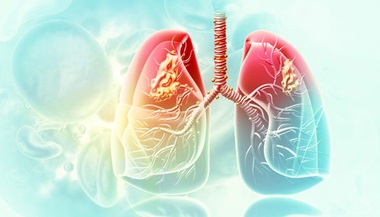Patient Story
Bronchopulmonary Dysplasia: Malani's Story

Malani is all sass — or at least that’s how mom and her health care team would describe the 1-year-old. She gives a look that puts a smile on anyone walking through her room in the neonatal intensive care unit (NICU) at Johns Hopkins All Children’s Hospital.
But she wasn’t always a happy baby.
“When I was pregnant at 26 weeks, I went for a fetal anatomy scan where they said the baby wasn’t measuring right and my blood pressure was high, so they said to go to the emergency room,” says Zikeria, Malani’s mother. Eventually, Zikeria was admitted to Bayfront Baby Place where they mentioned she would need to stay until the baby was delivered, and it was likely that her baby would need to spend some time in the NICU. A week later, Malani entered the world.
“I was scared when I had to have an emergency C-section, but the first time I saw her I was so happy,” Zikeria says. “She was only 1 pound and 1 ounce. She was just so tiny.”
Doctors told Zikeria her umbilical cord ruptured causing Malani a lack of nutrients and ultimately, they predicted she would have lung problems and likely need a tracheostomy — a procedure inserting a tube into the airway to allow for better breathing.
The team prepared Zikeria well for what the future would hold with a diagnosis of severe bronchopulmonary dysplasia (BPD). Although, days turned into weeks, and weeks turned into months at the NICU.
“Some babies with severe BPD, like Malani, need to stay in the NICU because they require significant support breathing,” says Preceousa Jensen, D.O., M.P.H., neonatologist with the Johns Hopkins All Children’s Maternal, Fetal & Neonatal Institute. “A small proportion of babies with severe BPD need a tracheostomy to ensure a safe airway to deliver the respiratory support necessary for them to continue to grow and develop.”
Over the months, the nurses, doctors, respiratory therapists and all the others who cared for Malani became family. Each day, her breathing got a little stronger and she worked hard in therapy.
“They loved her,” Zikeria says. “I don’t trust people a lot, but I could trust her nurses and the rest of the team and they made me comfortable especially when I couldn’t be there.”
“Malani has really came so far during her stay with us, and we’ve grown so close,” says Courtney Ward, R.N., in the NICU. “She definitely had a lot of ups and downs, but she always fought through with a smile and a rattle in hand.”
Then after just over 420 days in the hospital, Malani’s discharge day drew closer. However, in order to make sure the family was ready to care for Malani at home, they needed special training. The Center for Medical Simulation and Innovative Education, as well as Malani’s care team, worked with the family to ensure they felt comfortable taking her home with a trach. They also wanted to prepare them for any emergency situations they may encounter at home. The family practiced various scenarios on a Malani-sized medical mannequin for hours — from what to do if she’s not breathing to how to clean and fix a clog in the trach.
“It was weird because it was a mannequin and overwhelming at first because the team is watching you,” Zikeria says. “I’m a home health aide and besides knowing CPR, I don’t know that I was prepared until that training. All Children’s helped me with everything I know about caring for Malani and I recommend the simulation training to other parents in similar situations.”
“The families of medically complex children like Malani have to learn and practice so many critically important things before they can leave the hospital,” says Julia Krzyzewski, respiratory therapy clinical supervisor. “It takes a lot of time and effort, but we never take our eyes off the prize — bringing her home safely! I’m so proud of Malani and her family. They did an amazing job.”
The team was also impressed with the family’s hard work in the simulation center. When day 430 in the NICU came, also known as Malani’s discharge party, there were tears all around.
“I was so excited for the opportunity to watch this wonderful family grow as they learn to care for Malani’s special needs,” says Tammy Sandillo, pediatric ICU clinical nurse leader who was involved in Malani’s journey to home.
“Malani will continue to receive expert medical care by our pulmonology team, NICU Follow-up Clinic and our speech and occupational/physical therapists,” adds Jensen. “We spent over a year with Malani, Zikeria and her whole family; I know they are committed to making sure she has the best outcome possible. I cannot wait to see Malani thrive and grow in her home environment. Her NICU team believes in her strength because she is #MalaniStrong (as special shirts created and worn by staff read the week she was discharged).”
Malani made it home in time to celebrate the holidays. Her room is decked out in her favorite characters — Peppa Pig and Mickey Mouse. Mom couldn’t be happier and is ready for the future ahead with her little fighter.
“I don’t want to hold her back,” Zikeria says. “Once she gets to the stage when her trach can come out, I want her to explore more and do more things. I don’t want anything stopping her from what she wants to do.”





